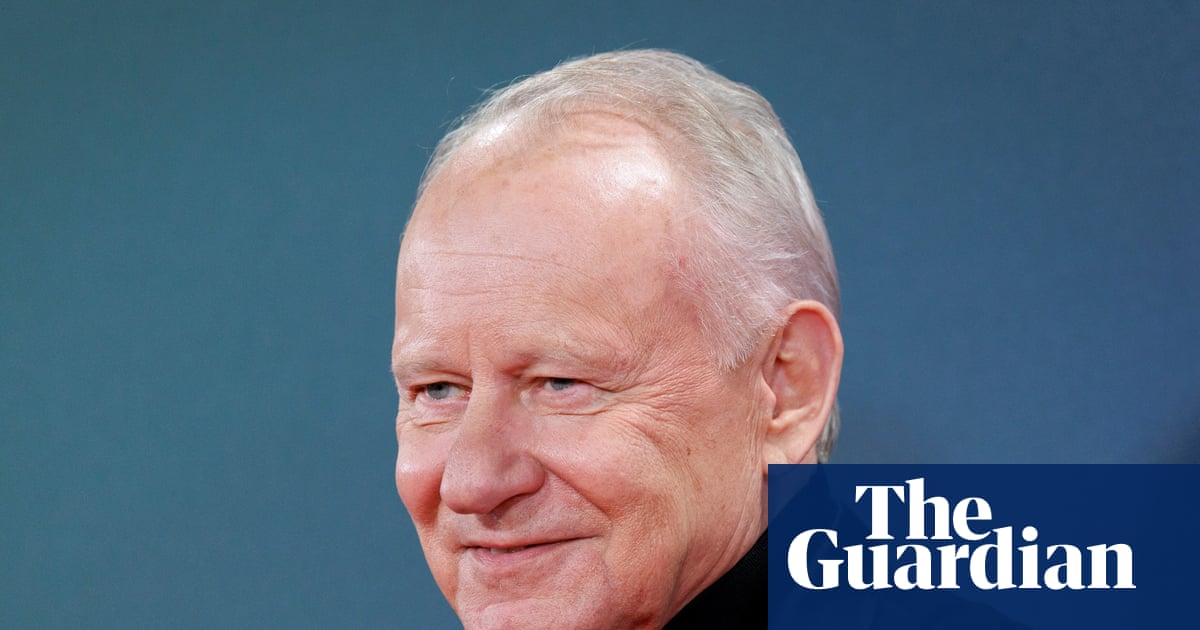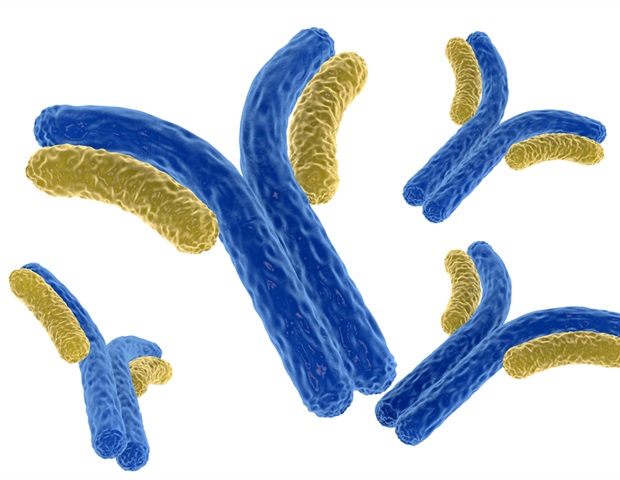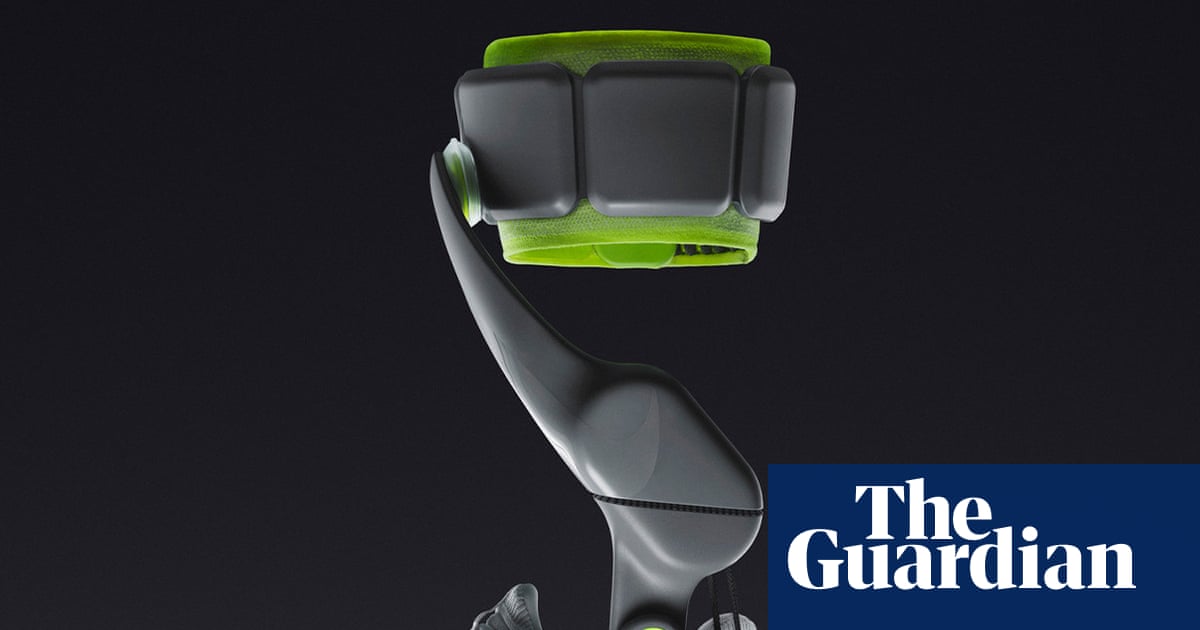The actor Stellan Skarsgård has revealed that he suffered a stroke three years ago and has been finding filming considerably more challenging since.
Speaking to Vulture to promote Sentimental Value, Joachim Trier’s Oscar-contender about a film…

The actor Stellan Skarsgård has revealed that he suffered a stroke three years ago and has been finding filming considerably more challenging since.
Speaking to Vulture to promote Sentimental Value, Joachim Trier’s Oscar-contender about a film…

A new potential antibody therapy strategy which restricts the growth of treatment-resistant breast cancers has been developed by scientists.
The King’s College London discovery, published today, could provide new treatment options…

The entrance to Nike’s swish global headquarters in Beaverton, Oregon is paved with rough cobbles, designed to remind employees to watch their step when they go forward.
Last summer, though, not even the world’s biggest sports brand could stop itself from taking an almighty tumble.
Over the course of one July day in 2024, Nike’s share price plummeted by $28bn – the worst single-day performance in the company’s history – after it revealed that second-quarter sales were down 10%.
There were headlines proclaiming that Nike was in crisis. That it had lost its cool, become either too woke, too safe, too conservative or too cumbersome, depending on their political stripe and reading of the situation. To no one’s surprise, its chief executive, John Donahoe, stepped down.
True, Nike was still worth around $100bn – more than twice the value of its closest rival, Adidas, and even further clear of Puma, Lululemon and New Balance. And, yes, the cost of living crisis didn’t help. But much of the pain was self-inflicted.
Just over a year later I am sitting with Nike’s new president and chief executive Elliot Hill, talking about how he intends to turn the company around with the help of some wild new innovations, including the world’s first motor-powered running and walking shoe.
Soon I will also hear about “mind shoes” that help Erling Haaland focus before matches, a self-inflating winter jacket that Team USA will wear at the Winter Olympics, and technology that aims to help England’s footballers at the World Cup.
Before then, though, I throw Hill, a huge soccer and baseball fan, a curveball. Might Nike’s recent kicking actually turn out to be a good thing? Both for consumers, who now have more choice from upstart brands such as ON and Hoka, and for his company – as it has forced it to raise its game?
Hill laughs, then leans in. “Trust me, I would have preferred not to go through the kicking,” he says. “And this one happens to be a pretty big kicking. But I do think it helps us refocus on why we exist, and is a rallying cry for us as a company.
“I think it helps us get sharper. We’re at our best when we’re competing. And not only competing, but competing and winning.”
Hill’s answer is open, honest and authentic: a face that Nike hasn’t always shown to outsiders. And the 62-year-old is just as direct when it comes to his plans to turn the company round using sport and trusting in new ideas.
“On my first day, I stood up on stage and my first slide said we are a sport company and we are a growth company, and they’re not mutually exclusive,” he says. “And when we invite eight billion consumers into the world of sport, I like our chances of growing.
“I know it sounds simplistic,” adds Hill, who joined Nike as an intern in 1988 and came back last October having retired in 2020. “But the response from around the world was: OK, we’re back to sport. We exist to serve the athletes. And when we do that well, that usually translates into innovative products, emotional storytelling, and then it pays off at retail.”
Internally Nike is signalling that fresh direction with a six-word mission statement: “Create Epic Shit, Make Athletes Better.”
It is provocative and bombastic. In other words, classic Nike. But, as Phil McCartney, Nike’s chief innovation, design and product officer, explains, it is also a tribute to one of its most famous athletes.
“Create epic shit is something that we got from Kobe Bryant,” he says. “He used to walk the halls here and say: ‘Are you creating epic shit?’ It’s a standard of excellence. It has a bit of an attitude to it. And we’re already starting to use it when we look at our innovations. Is it that? If it’s not, then we shouldn’t do it.”
Not so long ago, McCartney, who grew up in Wallsend in the north-east of England and was once a talented Great Britain runner, remembers an acquaintance telling him that the brand had become “big, dumb and slow”.
“And it sort of struck a chord with a lot of us,” he says. “Because that’s not who we are, it’s not how we want to operate. And it’s definitely not our future.”
Later that morning I am standing outside Nike’s LeBron James Innovation Centre, a 750,000-square-foot facility which has 400 motion-capture cameras, nearly 100 force plates and male and female sweat-testing dummies, waiting to stare into that future.
First I put on a normal-looking pair of super shoes. Then I attach a prototype device containing a motor to my ankles, calves and the shoes themselves. After that, a senior Nike biomechanical engineer, Alison Sheets, presses a button, and the device starts to whirr and fit more snuggly around my legs.
I feel like Robocop, and initially when I walk I move like him too. But when I start running and Alison ramps up the power via an app, I suddenly turn into Forrest Gump. Despite very little effort, I am running far quicker than my effort level – and my mind – tells me I should be.
It is more than a little weird. But also a whole lot of fun. Incredibly, at one point I jog up the 150-metre ramp on Nike’s campus which has a 15.63% incline – without being remotely out of breath. (If evidence didn’t exist, I wouldn’t blame you for wondering which substances in downtown Portland I had been inhaling.)
“We’re actually putting a robot on your body,” explains Michael Donaghu, Nike’s VP of create the future, emerging sport and innovation. “And we want that robot to be your best friend.”
What makes all this even harder to compute is that I happen to have been hobbling around with a heavily bruised little toe. Yet the shoe seems to take most of the impact off the joint, like an anti-gravity treadmill, allowing me to run with only minor pain.
Nike calls this motorised shoe Project Amplify and likens it to an ebike for feet, allowing the general population – rather than serious runners – to run or walk far quicker than they otherwise would do.
How much quicker? In testing, the company’s researchers found that athletes experienced anywhere from a 9-22% improvement in metabolic effort. In other words, like going from a 12-minute mile to a 10-minute mile, using the same effort.
Donaghu says that Nike engineers had been working on various iterations of the device for years, but it was Hill’s return that made it happen. “We sat down, pitched him on what the idea was and unflinchingly, he was like: ‘This is absolutely what Nike should be about,’” he says. “Nobody here is crazy. We just live in the future and have bigger dreams.”
At next summer’s men’s World Cup, Nike’s sponsored teams, including England, the US and Brazil, will be wearing kits with a new Aero-Fit material which – Nike says – will allow players to feel cool even in very hot and humid conditions. For good measure it is also made from 100% textile waste.
Before then it will release the Air Milano, a jacket that inflates in 30 seconds and can generate warmth levels that range from a lightweight hoodie to a mid-level puffer, and which will be worn by Team USA at the Winter Olympics.
Finally there is the Nike Mind, a shoe and slider that contain cushioning nodes which press on the sensors in the feet and – the company says – improve focus when worn.
Haaland, the Manchester City striker, and WNBA basketball star A’ja Wilson have been using the shoe, which took nearly a decade to develop, to prepare for matches. Nike insists it has the science to back up its claims.
“Using tools like EEG, we’ve measured changes in brain activity linked to focus and presence,” says Matthew Nurse, the company’s chief science officer. “That’s the first time we’ve been able to show – and prove – that footwear construction can influence how the mind works.”
However Donaghu, who joined Nike in the late 80s and even worked with the co-founder Bill Bowerman, insists this is just the start.
“We’re like kids in a candy store here,” he says. “And there’s something really magical going on. We sweat getting it right. And worry about making money later. That’s a lesson we learned from Bill Bowerman. Phil Knight [Nike’s other co-founder] really did care about building a company that was solvent and could make money. Bill Bowerman didn’t give a shit about making money. He just wanted to make athletes good. I love having both of those angels on our shoulders.”
Part of the success, he adds, comes from Nike having an innovation kitchen – a place he describes as “very non-hierarchical playground” – where about 30 people from all parts of the company throw ideas around.
“We’re the kids that want to know the things that others just have hunches about,” he says. “Oh, we don’t have a mind scientist? We’re going to hire a mind scientist in the kitchen. That’s how we push the ball forward.”
Nike has invited the Guardian to Beaverton to unveil its new innovations, but also to show the outside world that it is changing. And so towards the end of our conversation I ask Hill about Allyson Felix, one of America’s greatest Olympians, who in 2019 revealed Nike’s threat to cut her pay by 70% if motherhood affected her future athletic performance. Three months later Nike changed its stance to guarantee athlete’s pay and bonuses for 18 months around pregnancy, and three other brands soon followed suit.
I also mention the former Nike Oregon Project coach, Alberto Salazar, who was given a four-year doping suspension in 2019 and then a lifetime ban for sexual and emotional misconduct, issued by the US Center for Safe Sport.
Every company makes mistakes. But Nike has made a lot down the years without always owning up to them. Will it really be different under his watch?
“I think that consumers today want companies to be more vulnerable, authentic, real, and upfront,” Hill replies. “And here’s what I would say as the leader of this company. The entire world has my commitment to be real – about the situations when we get it right, and then there will be moments when we get it wrong. That’s just inevitable in the world of business. But I think it’s how we respond in those moments when we get it wrong that matters most.”
Hill is more guarded when it comes to discussing Donald Trump’s tariffs, which will cost the company about $1.5bn this year. But is there anything Nike can do to alleviate the burden?
“We have a pretty diverse global supply chain and expenses, and we’re pulling all the levers,” he says. “But my hope is that it doesn’t impact the world of sport.
“Because if you think about it, it’s not just Nike. It is helmet manufacturers, baseball bats, equipment, and it all trickles down to the consumer. The accessibility of sports today is already challenged, and I think it will make it even more challenging for the average American. That’s the part that I’m nervous about.”
Before travelling to the US, I spoke to a couple former Nike employees who both had positive things to say about Hill. One even insisted, somewhat implausibly, that when he was appointed last October, people literally cried with relief.
Certainly something had to be done to turn around the company’s fortunes. For years analysts had warned that Nike was relying too much on colour variations of older favourites – especially Jordans, Dunks and Air Forces – like a classic 80s rock station spinning the same old tunes even when the hype has faded.
Meanwhile Nike put a huge amount of focus on direct-to-consumer sales – meaning that fewer of its products were in stores.
That allowed the likes of Hoka, ON, and others to move in. And when the new wave of runners, often women in their 20s and 30s, flocked to join run crews after the pandemic they often turned to those brands first.
Since returning to Nike, Hill has focused on rebuilding relationships with retailers, with one of its largest customers, JD Sports, saying last month that Nike was “doing all the right things” to revive demand.
Hill has also gone back to having separate departments for each sport, such as running, football and basketball – as opposed to Donahoe, who organised things by men’s, women’s and kids’ categories which led to bottlenecks when it came to innovation. Now, Hill says, teams are quicker to react and get products to market.
He concedes that there is still plenty of work ahead. But in its recent earnings report there were some green shoots, with a number of well-received releases helping the running division grow by over 20% in the last quarter.
Football is also a huge passion for Hill, who was raised by a single mum in a blue-collar neighbourhood in Texas. In fact such was his love of the game he made a small investment in the Italian Serie B side Venezia when he initially retired in 2020, only to give it up when he returned to Nike last year.
Hill also remembers being “completely blasted” by some of his European colleagues in 1998 when he suggested they could do more to promote the women’s game. “They were like: ‘No one cares about women’s football,’ And then fast forward to today, almost 30 years later, and it’s phenomenal.”
As we chat he casts his mind back to the Women’s Euros this summer. During the final he sat with Football Association officials with England 1-0 down against Spain and looking like they had nothing left in the tank.
“I was yelling at them: ‘We’ve got to believe,’ he says. “Because you can just see it with the English. They’ve had their hearts broken so many times, especially in those big moments, and never winning one outside of the country, right? You can see it. So I literally started to yell at them: “Come on everybody, let’s go, come on, we got this.’
“And then, of course, when we won – everybody, the joy! And that’s the beauty of sport,” adds Hill, who says he wants Nike to absorb the lessons from the Lionesses’ resilience. “It’s those moments that define an athlete, a team, a country, and in our case, a company. And it didn’t hurt that Spain was an Adidas team.”
Before I leave Oregon I speak to Tony Bignell, a Briton who was a key figure in Eliud Kipchoge’s Breaking2 marathon project and Faith Kipyegon’s Breaking4 mile attempt as well as the game-changing super shoes that powered them, and is now Nike’s chief innovation officer. The company, he insists, is getting back on track despite a few “dramas” in recent years.
“It’s hard sometimes when you’re trying to help an elite athlete as well as somebody like my mum, who wants to walk the dog around the block,” he says. “But under Elliot the handbrake is off, and we feel loose. It’s amazing how one person can make that difference.”
“I wish more people could understand the people in this building because they’re not corporate, whatever you might read about Nike,” he adds. “It’s just a good human place to be.” Somewhat ironically a company that tells stories better than most has often failed to get this across.
Meanwhile to the outsider it also seems like there are multiple Nikes. The sports brand that wants to win at all costs, and sometimes takes it too far. The global multinational with 80,000 employees, watching every flicker of its share price. The company that is trying to stay endlessly cool. And the day-to-day numerous super-smart scientists, engineers, and other employees who will happily shoot the breeze, praise rivals, and be open about the state of the company.
However Hill insists that, when you dig into its soul, Nike remains the company set up in 1972 by Phil Knight (the campus in Beaverton has just been renamed in his honour) and Bill Bowerman. The one that was propelled to glory by elevating athletes such as Steve Prefontaine and Michael Jordan, along with a series of innovations that began when Knight began creating shoes with his waffle maker, and selling them out of his Winnebago.
“Those two started this company on a handshake,” says Hill. “They each put $500 in. And they had a simple purpose: we exist to serve the athlete, and to put them at the centre of everything we do.”
More than five decades much has changed. But one time-worn formula remains the same: Create Epic Shit, Make Athletes Better. Keep consumers in love with the Swoosh. Reap the rewards.

Researchers have developed a thin, food-safe coating derived from edible fungus and plant fibers that can make materials such as paper, textiles and wood resistant to water, oil and grease.
The study, published in Langmuir, outlines how…

By Matthew Stenger
Posted: 10/23/2025 10:28:00 AM
Last Updated:
In a Chinese phase III trial (PHENIX) reported in The New England Journal of Medicine, Tu et al found that sentinel lymph node biopsy…

Between film sets and theater stages, Pamela Anderson still makes time to get her hands dirty. The actress is currently in the midst of a critically acclaimed career renaissance with starring roles in The Last Showgirl and Naked Gun, plus a slate…

23 October 2025 – At the end of Q3’25, global PE deal volume was $1.5 trillion — on pace to reach a four-year high should investment remain steady through Q4’25. The buoyant investment is notable given the significant decline in deal volume — from 15,083 deals in the first three quarters of 2024 to 13,574 in the first three quarters of 2025.
After some pullback in PE investment in Q2’25 — driven largely by geopolitical tensions and uncertainties related to US tariffs — Q3’25 saw global PE investment reach $537.1 billion according to KPMG’s Q3’25 Pulse of Private Equity. The buoyant deal value was helped significantly by three very large public-to-private transactions in the US: Electronic Arts ($54.6 billion), Air Lease ($28.2 billion), and Dayforce ($12.4 billion).
The Americas accounted for 60% of global PE value in Q3’25 ($322.9 billion), and just under half of the total number of deals (1,977). Of this total, the US accounted for $300.2 billion across 1,971 deals. The EMA region came a distant second—with $178.3 billion in PE investment across 1,736 deals during Q3’25, led by the $7.7 billion buyout of UK-based Pension Insurance Corporation — while Asia saw $30.6 billion in PE investment across 253 deals — led by the $2.1 billion buyout of Australia-based Insignia Financial.
At a sector level, the TMT sector attracted the largest share of PE investment globally in the first three quarters of 2025 ($469 billion), although the level of investment was tracking well shy of the $647.3 billion seen in 2024. Meanwhile, PE investment in the infrastructure and transportation space was already $126.3 billion at the end of Q3’25 — far ahead of the $99.4 billion and $98.7 billion seen during 2023 and 2024 respectively.

The designers of a cryptocurrency launched by the US first lady, Melania Trump, in January were accused in court filings on Tuesday of orchestrating a pump-and-dump scheme.
The $MELANIA coins were released for just a few cents each on 19 January, the day before Donald Trump was inaugurated as US president. In addition to $MELANIA, Donald Trump launched $TRUMP a few hours before his inauguration.
Within hours, the $MELANIA coin’s price soared to $13.73.
However, it then collapsed almost as quickly, and is now only worth about 10 cents – less than 1% of its peak price. $TRUMP traded at a peak of $45.47 and now goes for $5.79, according to Coin Market Cap.
The plaintiffs say the coin’s creators organized the operation knowing that the digital currency’s value would plummet.
Melania Trump herself is not named in the lawsuit. The plaintiffs said they did not believe she was “culpable”, but accused the crypto companies of using her and other familiar faces as “window dressing” for their crimes.
In newly filed court papers, investors accuse the executives of the Meteora cryptocurrency exchange platform, on which $MELANIA was initially traded, of setting up a scheme that allowed them to indirectly purchase large quantities of the virtual coin.
Their accomplices then quickly resold these digital currencies, pocketing substantial profits while causing the price to plummet, according to documents filed on Tuesday in Manhattan federal court.
after newsletter promotion
The allegations concerning $MELANIA have been added to legal proceedings involving several other cryptocurrencies, which began in April. Meteora did not immediately respond to a request for comment.
The Trump family has pocketed more than $1bn in pre-tax profits from several cryptocurrency-related products and companies over the past 12 months, the Financial Times reported last week.

A new study led by Flinders University has found that being exposed to bright light at night can significantly increase the chances of developing serious heart problems, including heart attacks, strokes and heart failure.
Published…